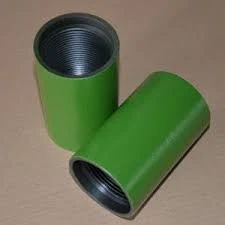Casing Connections and Thread Types for Oil and Gas Applications Explained
Understanding Casing Threads and Couplings in Oil and Gas Industry
In the oil and gas industry, casing threads and couplings play a crucial role in ensuring the structural integrity and functionality of wells. As drilling operations continue to evolve, the importance of understanding these components becomes increasingly significant. This article provides an overview of casing threads and couplings, their types, applications, and the important factors to consider in their selection and installation.
What are Casing Threads?
Casing threads are the helical grooves that are cut into the ends of casing pipes. They allow sections of casing to be screwed together, enabling extended lengths to be achieved underground, which is essential for protecting the wellbore against collapse and preventing contaminants from entering groundwater. The design of these threads is critical as it influences the mechanical strength, leakage prevention, and ease of installation of the casing.
Types of Casing Threads
Casing threads come in various designs, each suited for different applications and conditions. Among the most common types are
1. API Threads The American Petroleum Institute (API) specifies standard casing thread designs. API threads are widely used and are recognized for their simplicity and reliability. This type includes both “Regular” and “Short” styles, which differ in length and fit.
2. Premium Threads For more demanding applications, premium threads provide enhanced sealing and mechanical performance. They are designed to withstand higher pressures and are less prone to galling or wear. Premium connections often feature advanced geometries and materials that improve performance in challenging environments.
3. Specialty Threads In addition to standard API and premium threads, there are specialty designs engineered for specific conditions, such as corrosive environments or extreme temperatures. These designs often incorporate innovative sealing technologies that enhance the reliability of the connection.
Couplings The Connecting Components
Couplings are pipe fittings that connect two sections of casing or control the flow of fluids within a pipeline. Made from materials such as steel, couplings are crucial for transferring loads and maintaining the integrity of the wellbore.
casing threads and couplings

1. Standard Couplings These are typically used in conjunction with API casing threads. They provide a straightforward connection where minimal resistance to flow and pressure is required.
2. Locking Couplings Employed in high-stress applications, locking couplings use mechanical interlocks to provide a more robust connection. This feature helps distribute loads evenly and reduces the risk of connection failure during drilling operations.
3. Non-Pressure Couplings In some scenarios, especially when working with non-hazardous fluids, non-pressure couplings may be utilized. While less secure than their pressured counterparts, they can be effective in situations where leakage is not a primary concern.
Considerations for Selection and Installation
When selecting casing threads and couplings, various factors must be considered
1. Well Conditions The environment in which the casing will be used is paramount. Considerations such as temperature, pressure, and the presence of corrosive substances will dictate the type of thread and coupling best suited for the application.
2. Load Requirements Different drilling scenarios will impose various mechanical stresses on the casing and couplings. Understanding these load requirements is essential to ensure the selected components can withstand operational demands without risk of failure.
3. Installation Practices Proper installation techniques are necessary to ensure the longevity and reliability of casing threads and couplings. Following best practices during assembly, such as maintaining proper torque specifications and avoiding cross-threading, can significantly reduce the risk of future complications.
4. Quality Assurance Ensuring that casing threads and couplings meet industry standards through proper testing and quality assurance practices is vital. This includes non-destructive testing methods to verify the integrity of the materials used.
Conclusion
Casing threads and couplings serve as the backbone of drilling operations in the oil and gas industry. Understanding their design, types, and application is essential for achieving safe and effective well conditions. By considering environmental factors, load requirements, and installation practices, operators can help ensure the integrity and efficiency of their drilling operations, ultimately contributing to the success of their projects in the ever-evolving landscape of energy production.
-
Choosing the Right Pup Joint Manufacturers for Oil and Gas OperationsNewsAug.22,2025
-
Tubing Coupling: The Small Connector with a Big ImpactNewsAug.22,2025
-
Tubing Crossover: The Essential Connector for Well IntegrityNewsAug.22,2025
-
Precision Flow Control in Well CompletionsNewsAug.22,2025
-
Casing Pup Joint for Optimal Well PerformanceNewsAug.22,2025
-
Reliable Connections with Wholesale Finished Casing CouplingNewsAug.22,2025







